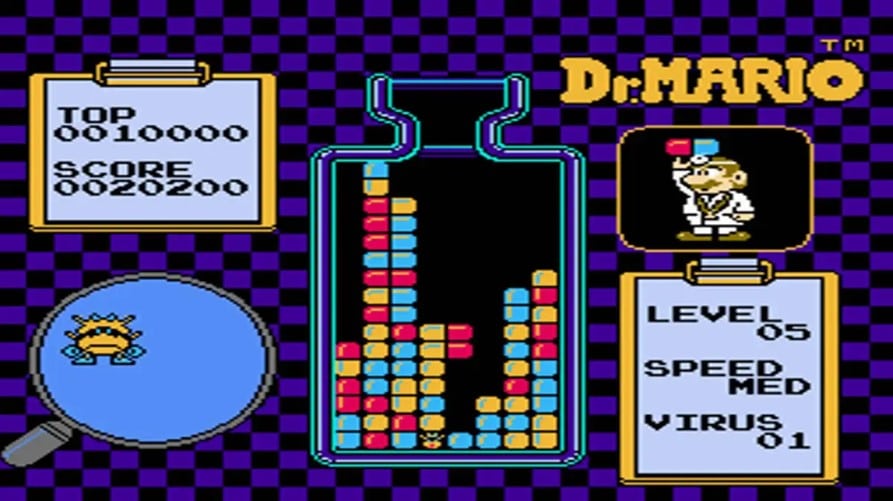“Oh my God… I’m going to pass out… I can’t feel my fingers”, were the words said by 13-year-old Willis Gibson in hysterics as he became the first person ever to beat what had thus far been believed to be the unbeatable game of Tetris.
Designed in 1984 by a Russian puzzle-loving software engineer named Alexey Pajitnov, the concept of Tetris is pretty straightforward: rotate puzzle pieces falling at increasing speeds on a computer or console screen to fit together and create solid lines to clear them. Repeat ad infinitum – or so we believed.
Theoretically? The game could go on forever if a player was fast enough.
Technologically? When a player reaches a stage at which the game’s coding was not designed to interpret, they are met with a frozen screen known in video games as a “kill screen”.
A “kill screen” in Tetris had historically only ever been achieved by Artificial Intelligence, until Gibson became the first human to beat the blocks on December 21, 2023.
It took four decades for one of the world’s most popular and celebrated games to be beat. But Tetris isn’t the only popular videogame with “unbeatable” status.
Here is a list of classic video games that remain unbeaten today:
Mario Party 4 Doors of Doom
While most people don’t consider Mario Party titles as games to beat, we had to include the Mario Party 4 Doors of Doom mini-game, if not for its absurd winning probability.
Doors of Doom is a very simple single-player mini-game in which the player is presented with two doors: behind one of the doors is the next room and behind the other is Bowser. The objective is to get through as many doors as possible. So how do you win? After opening 30 doors, the next door always be Bowser, no matter what. That’s how far a player can advance in Doors of Doom.
While 30 doors, at a glance, may not seem like that many, there exists no recording of a player ever getting that far. The current record is 14 doors opened. This is down to the game’s ridiculous win probability. If you run the numbers, each room has a 50% chance of success, which means there is a 0.00000009% chance of opening the correct door 30 times and getting to the game’s hardcoded end. A little under a 1:billion chance.
Pac-Man and Donkey Kong
Two completely separate video games that are unbeatable for the same reason: the existence of the aforementioned kill screen that plagued many retro arcade games. In Pac-Man and Donkey Kong, both game’s systems eventually hit their respective processor limit.

With Pac-Man, the highest recorded beatable level is 255. The Map 256 Glitch – also commonly known as the “split-screen level” – is impossible to beat: the right side of the screen morphs into a garbled mess of numbers and letters, while the left side is normal.
In the original DK arcade game, reaching the 22nd stage triggers a bug in the game’s programming that decreases the timer’s limit to 4 seconds, an impossible amount of time to complete the stage. Salt in the wound? This kill screen happens at the cusp of scoring a million points, meaning no DK player has ever achieved a million points.
Dr Mario
Now, Dr Mario is an odd example of an unbeatable game. Released in 1990, Dr Mario is a puzzle video game developed by Nintendo for the GameBoy, where players play as the titular Dr. Mario attempting to clear viruses using different coloured pills.

Why is it an odd addition to the list? Well, it both does and doesn’t have an ending at the same time. In Dr Mario, when players beat Level 20, the game has been “won” and its end credits roll… and then the game continues. Players can actually continue playing until Level 28, where the viruses still spawn, but Dr Mario is nowhere to be found (no literally, he just disappears from the screen entirely). With no Dr Mario, players can’t defeat the viruses and we are eternally stuck at an unbeatable Level 28.
Smash TV
Smash TV was a 1990s two-player arcade game inspired by the Arnold Schwarzenegger film The Running Man, in which players fight incoming enemies to the death and collect prizes – the most coveted of them being something called the “Pleasure Dome” that would unlock upon defeating the final boss. The catch? It didn’t exist.

Developers of the original arcade game didn’t think that players would be good enough to get to the Pleasure Dome, so they simply never made one. Talk about underestimating your audience. When players did reach the final stage, they were furious and felt deceived by the developers. Their outrage resulted in the addition of the Pleasure Dome on the 2.0 arcade release and all subsequent console releases.
